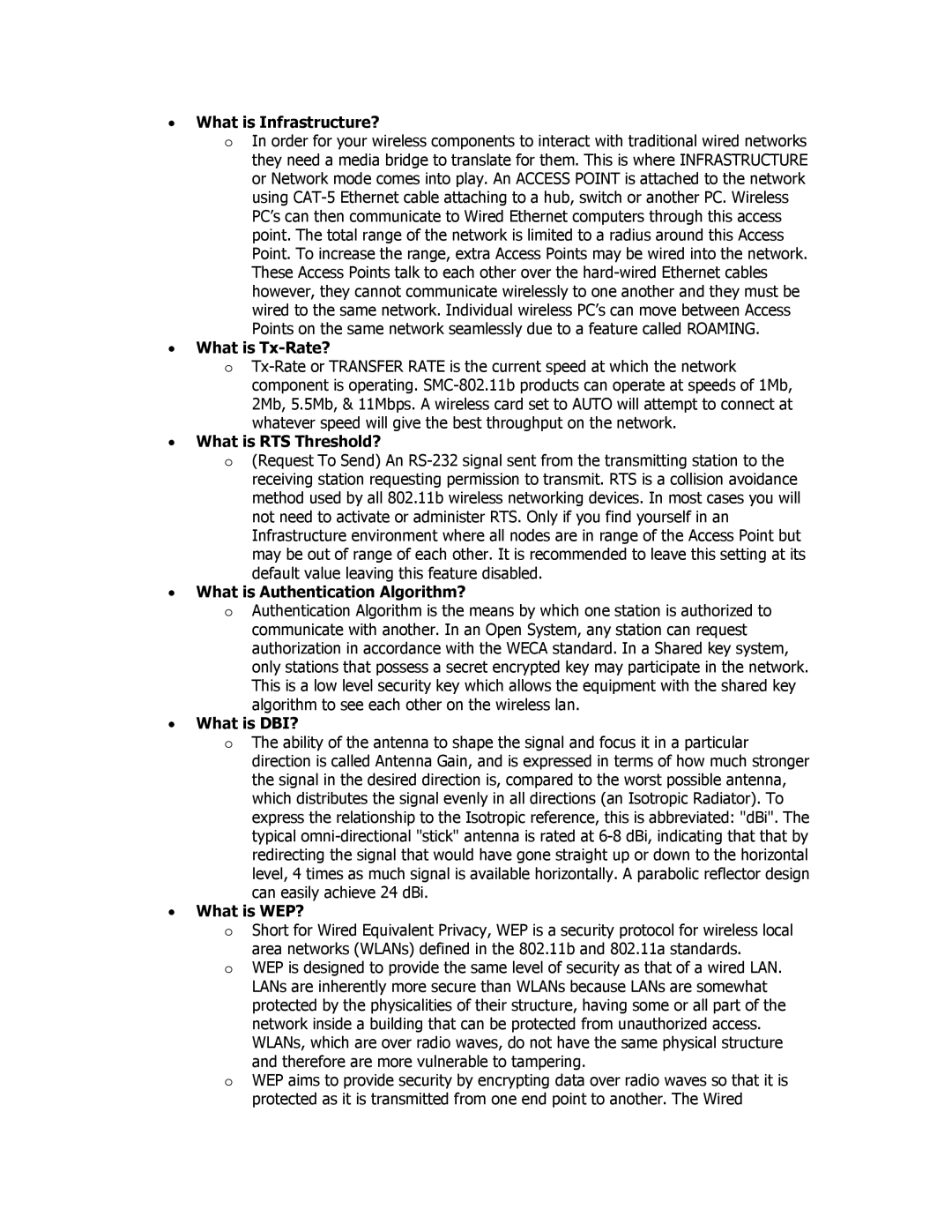•What is Infrastructure?
oIn order for your wireless components to interact with traditional wired networks they need a media bridge to translate for them. This is where INFRASTRUCTURE or Network mode comes into play. An ACCESS POINT is attached to the network using
•What is Tx-Rate?
o
•What is RTS Threshold?
o(Request To Send) An
•What is Authentication Algorithm?
oAuthentication Algorithm is the means by which one station is authorized to communicate with another. In an Open System, any station can request authorization in accordance with the WECA standard. In a Shared key system, only stations that possess a secret encrypted key may participate in the network. This is a low level security key which allows the equipment with the shared key algorithm to see each other on the wireless lan.
•What is DBI?
oThe ability of the antenna to shape the signal and focus it in a particular direction is called Antenna Gain, and is expressed in terms of how much stronger the signal in the desired direction is, compared to the worst possible antenna, which distributes the signal evenly in all directions (an Isotropic Radiator). To express the relationship to the Isotropic reference, this is abbreviated: "dBi". The typical
•What is WEP?
oShort for Wired Equivalent Privacy, WEP is a security protocol for wireless local area networks (WLANs) defined in the 802.11b and 802.11a standards.
oWEP is designed to provide the same level of security as that of a wired LAN. LANs are inherently more secure than WLANs because LANs are somewhat protected by the physicalities of their structure, having some or all part of the network inside a building that can be protected from unauthorized access. WLANs, which are over radio waves, do not have the same physical structure and therefore are more vulnerable to tampering.
oWEP aims to provide security by encrypting data over radio waves so that it is protected as it is transmitted from one end point to another. The Wired
